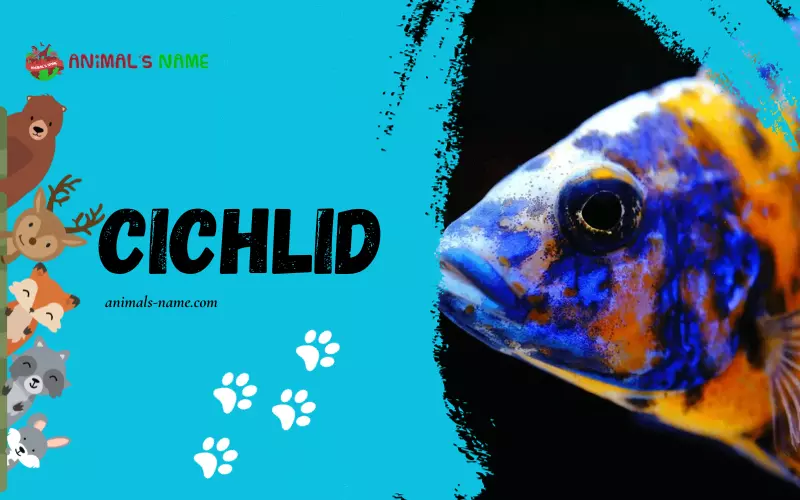Cichlids are a fascinating group of fishes that belong to the animal kingdom. They come in various shapes, sizes, and colours, making them popular for home aquariums. In today’s blog post, we will closely examine the history, facts, size, habitat, and classification of these marvellous creatures.
The history of cichlids is quite intriguing. They have been around for millions of years, originating from ancient lakes in Africa and Central America. These remarkable animals have evolved and adapted to various environments, allowing them to thrive in different parts of the world. With over 2,000 known species, cichlids have become a diverse and vibrant group, capturing the attention of animal enthusiasts worldwide.
Regarding facts about cichlids, one exciting thing to note is their incredible ability to care for their young. Unlike other fish species, cichlids are dedicated parents who diligently protect and care for their eggs and fry. Additionally, these remarkable animals have a keen sense of communication and hierarchy within their groups, making them exceptionally social creatures.
In terms of size, cichlids can range from just a few centimetres to several tens of centimetres in length. Some even grow pretty large, with examples like the Nile perch reaching lengths of over two meters! Habitat-wise, cichlids can be found in various freshwater environments, from rivers and streams to lakes and ponds. Each species has its preferred habitat, where it can thrive and adapt to specific conditions.
History of Cichlid
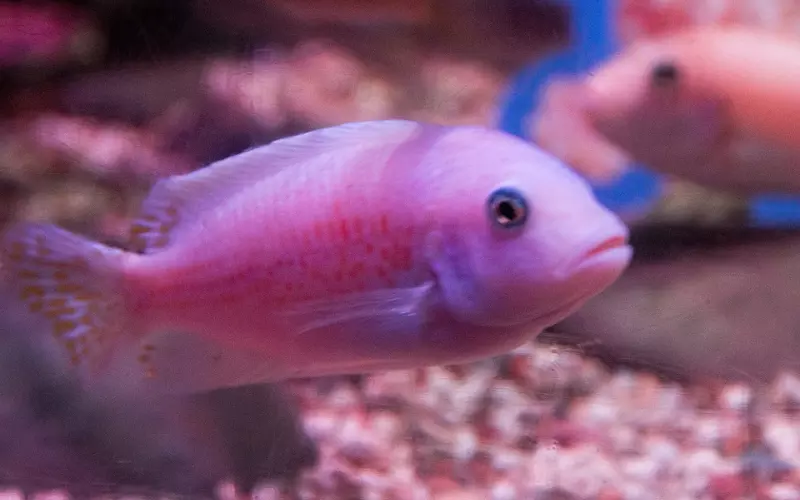
Cichlids are a type of fish found in freshwater habitats worldwide. These amazing creatures have a long and exciting history. It is believed that the first cichlids appeared around 100 million years ago during the Late Cretaceous period. They were one of the first fish families to adapt to diverse environments and lifestyles.
The ancestors of cichlids were initially found in Africa, but they spread to other parts of the world over time. Today, cichlids are found in Africa, South America, Central America, and even the Middle East lakes and rivers. This migration happened because cichlids are adaptable and can survive in different water conditions.
One of the reasons why cichlids are so popular among aquarium enthusiasts is their incredible diversity. There are over 2,000 known species of cichlids, each with unique colours, patterns, and behaviours. Some cichlids are small and peaceful, while others are large and aggressive. This diversity results from millions of years of evolution and has made cichlids one of the animal kingdom’s most successful groups of fish.
Cichlids are fascinating animals with a rich history. They have been around for millions of years, adapting to different environments and evolving into thousands of species. Their colourful appearance and unique behaviours make them a favourite among fish enthusiasts. Whether in the wild or in an aquarium, cichlids continue to captivate people with their beauty and diversity.
Importance of Cichlid
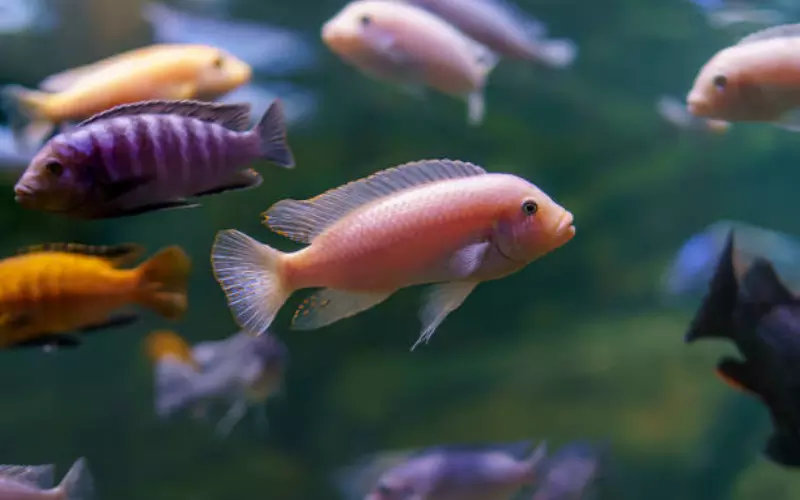
Cichlids are a type of fish that are found in freshwater habitats like rivers and lakes. These animals are essential for many reasons. Firstly, cichlids play a vital role in maintaining the balance of their ecosystems. They feed on other smaller fish and control their population, preventing them from becoming too numerous and overwhelming their surroundings. By doing so, cichlids help maintain a healthy and diverse aquatic community.
Secondly, cichlids are popular among fish enthusiasts and aquarium hobbyists. People enjoy keeping these beautiful creatures in their homes as pets because of their vibrant colours and exciting behaviours. This has led to a significant increase in the trade and breeding of cichlids, contributing to the economy.
Finally, cichlids are also crucial for scientific research. Scientists study their behaviour, genetics, and adaptations to understand the natural world better. They provide valuable insights into evolution, ecology, and animal behaviour questions. Furthermore, studying cichlids can help us uncover new knowledge that could benefit conservation efforts and the preservation of other aquatic species.
Cichlids are vital because they help maintain the balance of ecosystems, bring joy to aquarium enthusiasts, and contribute to scientific research.
Amazing Facts About Cichlid
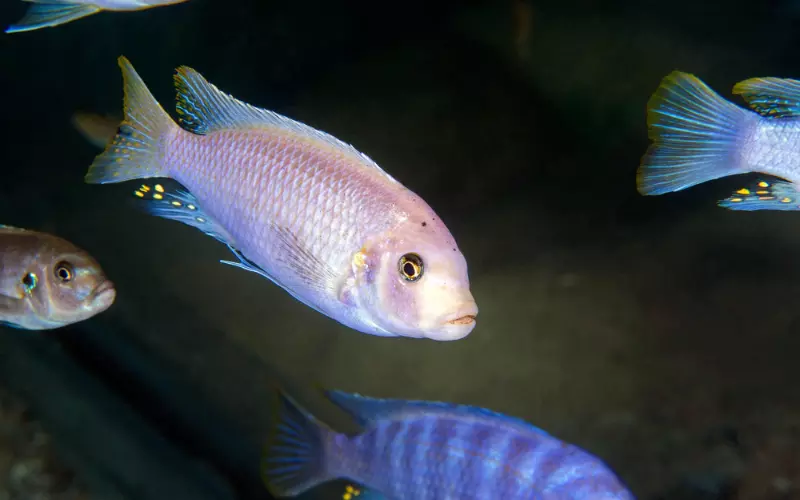
1. Cichlids are a type of fish that belong to the family Cichlidae.
2. There are over 2,000 different species of cichlids found all around the world, mainly in freshwater habitats.
3. Cichlids come in various sizes, shapes, and colours. Some cichlids are small, only a few centimetres long, while others can grow up to a foot or more.
4. Many cichlids are known for their bright and vibrant colours, including shades of blue, orange, red, green, and yellow. These colours help them attract mates or display dominance.
5. Cichlids are known to be very intelligent and exhibit complex behaviours. They are capable of learning, problem-solving, and even recognizing their owners.
6. Most cichlids are omnivores, which means they eat plants and other animals. Their diet may include insects, small crustaceans, algae, and plant matter.
7. Cichlids are typically found in freshwater lakes, rivers, and streams, but some species have adapted to live in brackish or saltwater environments.
8. Some cichlid species are mouthbrooders, which means they carry their eggs and young in their mouths. The female lays her eggs, and the male fertilizes them. Afterwards, the male collects the eggs in his mouth and protects them until they hatch.
9. Cichlids are known for their diverse reproductive strategies. Some species form monogamous pairs and are very dedicated parents, while others practice polygamy and have multiple mates.
10. Cichlids are known for their territorial behaviour. A male cichlid will establish and defend its territory, including a specific nesting site or an entire portion of the water.
11. Many cichlids exhibit fascinating courtship rituals, where males show off their colors, perform intricate dances, or create elaborate structures to attract females.
12. In their natural habitats, cichlids play critical ecological roles. They help control the populations of smaller fish, control algae growth, and serve as a food source for larger predators.
13. Cichlids are popular among aquarium hobbyists due to their vibrant colours and exciting behaviours. They can be kept in various tank sizes, but adequate space and appropriate water conditions is vital.
14. Cichlids have a specialized set of teeth for different feeding behaviours. Some have sharp teeth for hunting prey, while others have flat teeth for crushing and grinding plant matter.
15. Cichlid fish have a lengthy lifespan, varying from a few years to over 20 years, depending on the species and their care. Providing a well-balanced diet, suitable tank conditions, and proper maintenance can contribute to their longevity.
Can we keep Cichlid as our Pet?
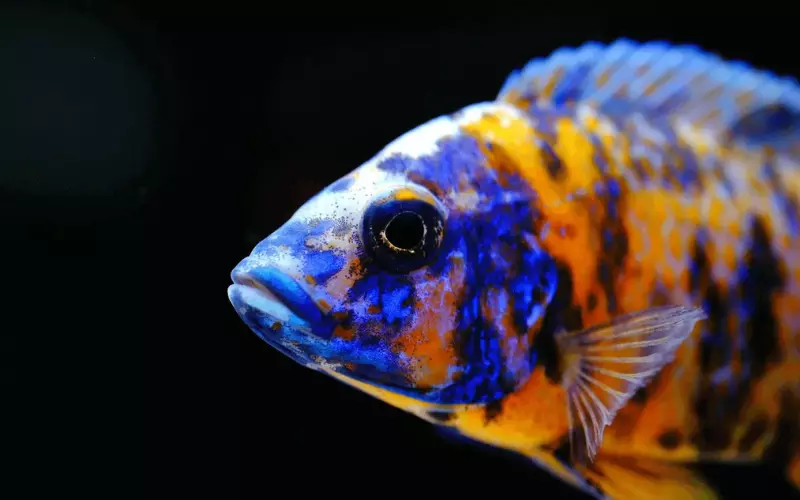
Yes, we can keep Cichlids as pets. Cichlids are a type of fish that are commonly kept in aquariums. They are known for their bright colours and interesting behaviours. Cichlids come in many different species, each with its unique characteristics. These fish can be a great addition to a home or classroom aquarium.
However, it is essential to remember that Cichlids require specific care and conditions to thrive. They need a spacious tank with plenty of hiding places, clean water and a balanced diet. It is also essential to research the specific needs of the particular Cichlid species you are interested in keeping, as some may have more specific requirements than others.
On the other hand, if a Cichlid species has become extinct, it means none of these animals are left in the world. This could happen for various reasons, such as habitat destruction, pollution, or overfishing. When a species becomes extinct, it is deplorable because it means we have lost a unique and vital part of our planet’s biodiversity. In such cases, we cannot keep them as pets because there are none left to keep.
Cichlids can make excellent pets, but providing them with proper care and environment is essential. They can be a great way to observe and learn about aquatic life. However, if a Cichlid species has gone extinct, we can no longer have them as pets. Extinction is a severe matter that highlights the importance of preserving and protecting our natural world.
Size of Cichlid
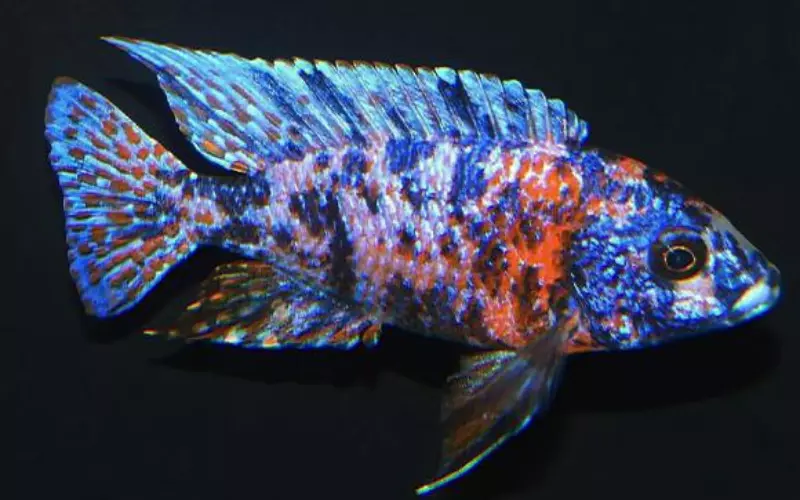
Cichlids are fish found in freshwater habitats like lakes and rivers. They come in various sizes and can vary depending on the species. Some cichlids are as tiny as 2 inches long, while others can grow as big as 3 feet long!
The size of a cichlid can also depend on factors like age, diet, and living conditions. Typically, younger cichlids are smaller, and they can reach their full potential as they grow. The diet of the cichlid also plays a vital role in its growth. A balanced and nutritious diet can contribute to a cichlid’s healthy growth and size.
Some cichlids are known for their impressive size, such as the Nile tilapia, which can grow up to 3 feet long. Other popular cichlids, like the Electric Blue Hap or the African Cichlid, range from 4 to 8 inches. However, it’s important to note that not all cichlids grow to be massive; many species remain small, like the Ram cichlid, which is only about 2 inches long.
The size of a cichlid can vary greatly depending on its species, age, diet, and living conditions. Some cichlids can grow to be as small as 2 inches, while others can reach up to 3 feet in length. Regardless of their size, these fascinating fish can be found in freshwater habitats, captivating both experienced hobbyists and curious observers alike.
Habitat of Cichlid
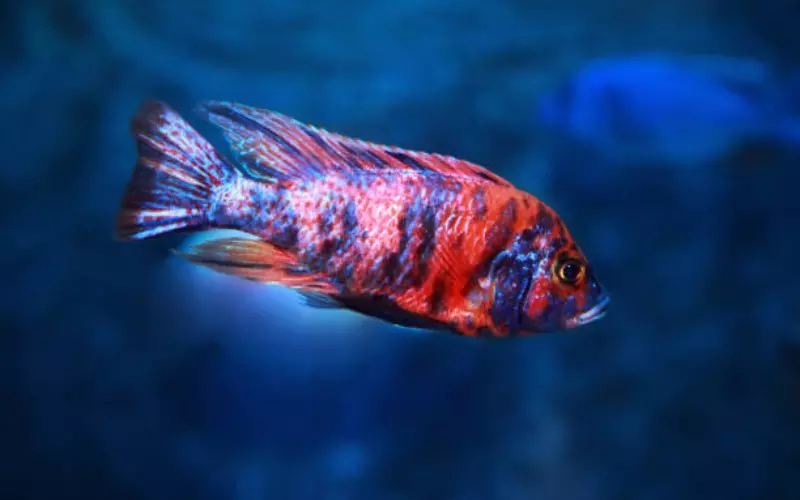
Cichlid animals are predominantly found in freshwater habitats all around the world. These habitats include lakes, rivers, and ponds. Cichlids are known for their adaptability, which allows them to thrive in various environments. They are especially plentiful in Africa, South America, and Central America, where they can be found in large bodies of water and smaller streams.
Cichlids often prefer rocky or sandy bottoms in their natural habitats and plenty of hiding places, such as caves or crevices. These hiding spots provide shelter from predators and serve as cichlids’ territories. Furthermore, cichlids require clean water, stable temperature, and good water quality to support their well-being.
Cichlids are also known for their ability to adapt to different conditions within their habitat. They can easily adjust their feeding habits based on the available food sources, ranging from insects and small crustaceans to plants and detritus. Cichlids have also exhibited behaviours such as digging in the substrate to create nests for their eggs and defending their territories from intruders.
Overall, the habitat of cichlid animals varies depending on the specific species and the region they inhabit. They are found in freshwater bodies like lakes and rivers, preferring places with hiding spots and clean water. Due to their adaptability, cichlids can thrive in different conditions and adjust to various food sources. Understanding their habitat is crucial to conserving and protecting these remarkable fish species.
Evolution of Cichlid

Cichlids are a group of fish known for their vibrant colours and diverse forms. They have evolved through adaptive radiation, which means they have diversified into many species to fill different ecological niches. This evolution has taken place over millions of years.
In the beginning, all cichlids had common ancestors. They lived in a single environment, but as time passed, different cichlids started to occupy various habitats, such as rivers, lakes, and streams. These environmental changes forced the cichlids to adapt to different food sources, water conditions, and predators. As a result, they evolved features like specialized teeth, body shape, and colouration to help them survive in their specific habitats.
One fascinating aspect of cichlid evolution is their rapid speciation, which means forming new species relatively quickly. This is due to their ability to breed quickly and produce many offspring. Additionally, cichlids have a unique way of selecting mates, called sexual selection, where the most attractive or successful individuals have a higher chance of mating. Over time, this has led to various colour patterns and behaviours in different cichlid populations.
Cichlid fish have evolved through adaptive radiation and rapid speciation over millions of years. Their ability to adapt to different environments and unique mating strategies have allowed them to become one of the planet’s most diverse groups of fish. The incredible variety of cichlids we see today is a testament to the power of evolution in shaping life on Earth.
Classification of Cichlid
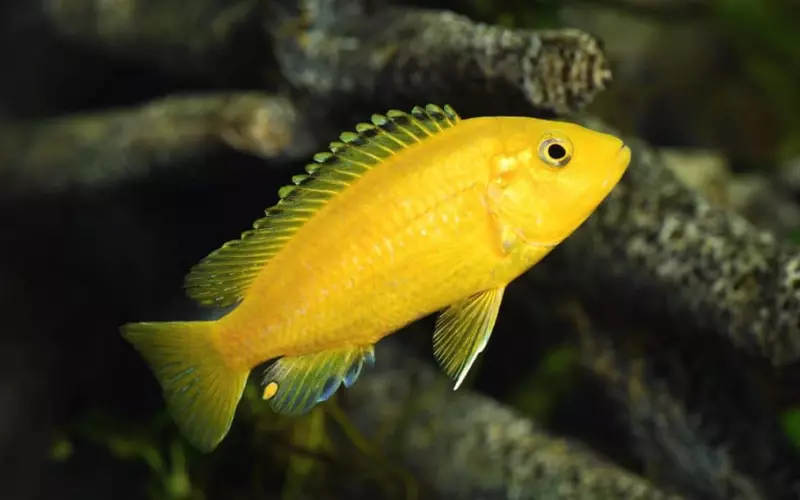
Cichlids are a group of fish that are primarily found in freshwater habitats. They belong to Cichlidae, a large family comprising over 2,000 species. Cichlids are known for their vibrant colours and diverse body shapes. They can be found in various parts of the world, including Africa, Central and South America, and Asia.
One way to classify cichlids is based on their geographical distribution. African cichlids are found in lakes such as Lake Tanganyika, Malawi, and Victoria. They are known for their bright colours and have become popular in the aquarium trade. American cichlids, on the other hand, are primarily found in Central and South America, including the Amazon River basin. They tend to be more extensive compared to African cichlids.
Another way to classify cichlids is by their feeding habits. Some cichlids are herbivores, meaning they mainly eat plants and algae. Others are carnivores, feeding on small invertebrates and other fish. There are also omnivorous cichlids with varied diets, including plants and animals.
Cichlids are a diverse group of fish that can be found in freshwater habitats around the world. They can be classified based on their geographical distribution or their feeding habits. Understanding these classifications can help us learn more about these fascinating creatures and their behaviour in their natural environments.
Different Types of Cichlid
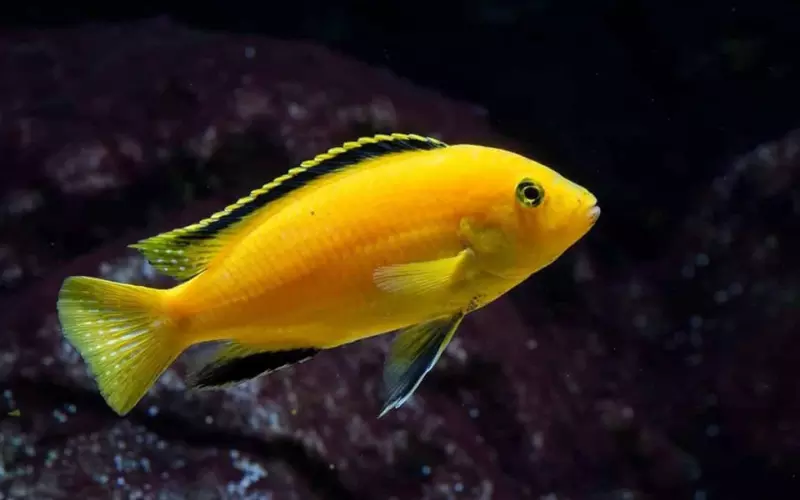
1. Malawi Cichlid: These fish are known for their vibrant colours and come from Lake Malawi in Africa. They have a peaceful temperament and are perfect for beginners due to their easy-care requirements.
2. Electric Yellow Cichlid: This cichlid species is named for its bright yellow colouration. They are native to Lake Malawi and are popular due to their lively and active behaviour, making them an attractive addition to any aquarium.
3. Oscar Cichlid: Oscars are large and bold fish that can grow up to 16 inches in size. They come in various colours and patterns and are known for their high intelligence and ability to recognize their owners.
4. Jack Dempsey Cichlid: Jack Dempseys are famously named after the boxer due to their aggressive nature. They are native to Central America and require a larger tank with plenty of hiding spots. Their striking blue colouration adds to their popularity.
5. Convict Cichlids: These are small and hardy, making them a popular choice for beginners. They are native to Central America and have distinct black and white stripes, resembling a prisoner’s uniform.
6. Firemouth Cichlid: Named for the fiery red colouration on their throat, firemouth cichlids are easy to care for and relatively peaceful. They are native to Central America and prefer plenty of hiding spots within their tank.
7. Angelfish Cichlid: Angelfish cichlids are known for their elegant appearance and swimming style. They come in various colour varieties and are peaceful creatures, making them a beautiful addition to any community aquarium.
8. Blue Peacock Cichlid: These eye-catching cichlids are native to Lake Malawi and are highly sought after due to their vivid blue colouration. They prefer a well-planted tank with plenty of open swimming space.
9. Discus Cichlid: Discus cichlids have a round and flat body shape, making them unique. They come in various colours and require specific water conditions, making them more suitable for experienced aquarium enthusiasts.
10. Flowerhorn Cichlid: Flowerhorns are known for their distinctive protruding head shape and vibrant colours. They are a hybrid species created through selective breeding and have become highly popular due to their unique appearance. They are generally tolerant of varying tank conditions.
Geographical Presence of Cichlid
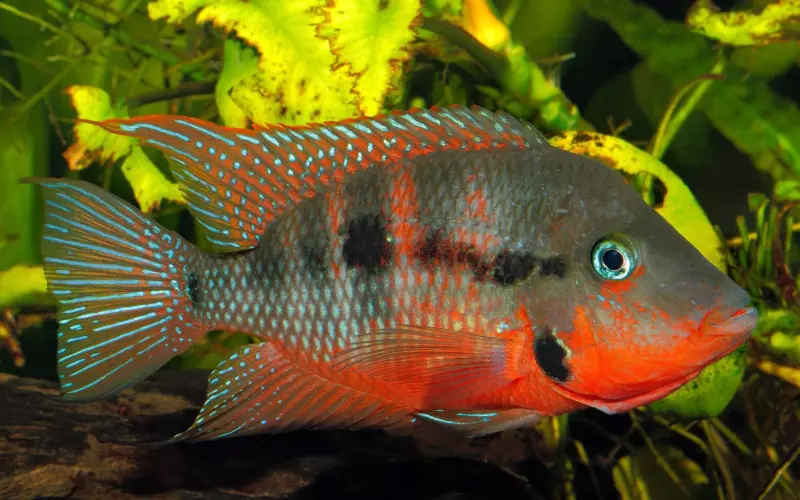
Cichlids are a type of fish that are found in various regions around the world. They are most commonly found in freshwater habitats like lakes, rivers, and streams. One of the regions where Cichlids are found is in Africa, particularly in the Great Lakes region, such as Lake Malawi, Lake Tanganyika, and Lake Victoria. These lakes provide a diverse and rich environment for Cichlids to thrive. Cichlids are also found in Central and South America, particularly in the rivers and lakes of the Amazon basin.
However, there are also regions where Cichlids are not found. One such region is Europe, where Cichlids are not naturally found in the wild. This is because the environmental conditions in Europe are not suitable for Cichlids to survive and reproduce. Another region where Cichlids are not found is the Arctic and Antarctic regions, as the extreme cold temperatures and icy waters are not conducive to their existence.
Cichlids are found in various regions worldwide, particularly in Africa and Central/South America. These fish prefer freshwater habitats like lakes and rivers to thrive. However, they are not found naturally in regions such as Europe and the Arctic/Antarctic, where the environmental conditions are unsuitable for survival.
Scientific Name of Cichlid
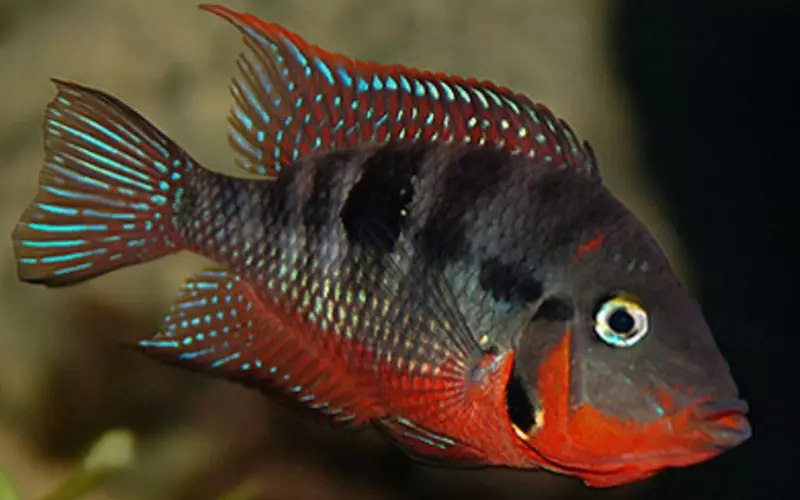
The scientific name of a particular type of Cichlid fish is Neolamprologus brichardi. These fish are native to Lake Tanganyika in East Africa and are known for their beautiful colours and unique behaviours. Cichlids are a group of fish that belong to the family Cichlidae, and they can be found in freshwater habitats worldwide.
The Neolamprologus brichardi, or cichlids for short, are fascinating creatures. They are known for their strong family bonds and cooperative breeding behaviour. Instead of laying their eggs randomly, these fish create specialized breeding territories and live in social groups. The dominant pair guards and cares for the eggs and fry, while other group members help protect the territory and look after the young fish. This cooperative behaviour helps increase the survival rate of their offspring.
Cichlids are also famous for their diverse colours and patterns. Their vibrant hues range from vivid oranges and yellows to blues and reds. These striking colours help them attract mates and establish dominance in their social groups. Some cichlids even have intricate patterns on their bodies, making them appear even more eye-catching. Cichlids are fascinating fish known for their intriguing behaviours and stunning appearances.
Diet of Cichlid
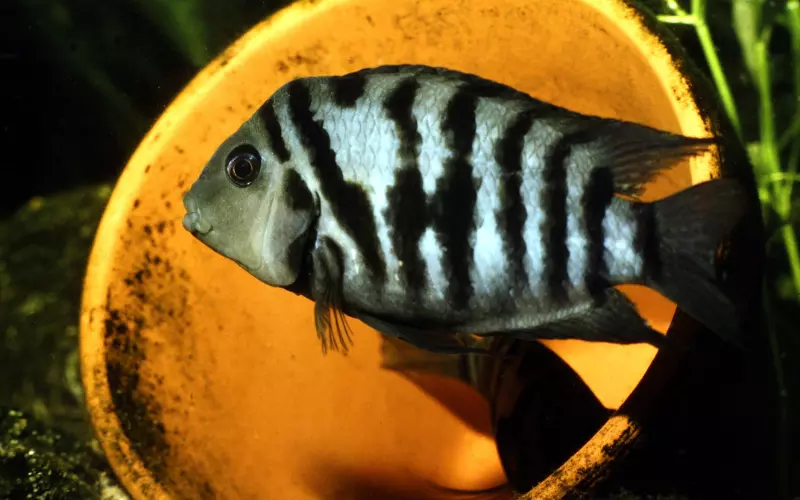
Cichlid animals have a diverse and varied diet. They eat many things, such as plants, insects, and other small animals. Because of their wide range of food choices, cichlids are considered omnivores, meaning they can eat plants and animals.
A critical part of a cichlid’s diet is plants. They often feed on algae, a plant that grows in water. Cichlids also eat other aquatic plants like seaweed and water lilies. These plants provide essential nutrients that help the cichlids stay healthy and grow.
In addition to plants, cichlids also eat small animals. They are skilled hunters, catching prey like insects, small crustaceans, and tiny fish. Some cichlids even eat other cichlids! They have sharp teeth and powerful jaws that help them catch and eat their prey.
Cichlids have a diverse diet, including plants and small animals. They eat algae, aquatic plants, insects, and other small creatures. Their ability to eat a wide range of food helps them thrive in different environments.
Locomotion of Cichlid

Cichlids are fish that can move in a few different ways. They have a unique fin called the caudal fin, which is located at the back of their body. This fin helps them to swim forward in the water. They use a side-to-side motion with their body and tail to push themselves through the water. It’s similar to how we move our arms and legs while swimming. By moving their body and tail, cichlids create a force that propels them forward.
Cichlids also have other fins called pectoral fins, which are located on the sides of their body. These fins help the fish keep their balance and steer while they swim. They use their pectoral fins to change direction and turn in the water. This way, they can avoid obstacles and find food. Cichlids can swim and navigate through the water using their caudal fin for propulsion and pectoral fins for balance and control.
Social and Sexual Behaviour of Cichlid
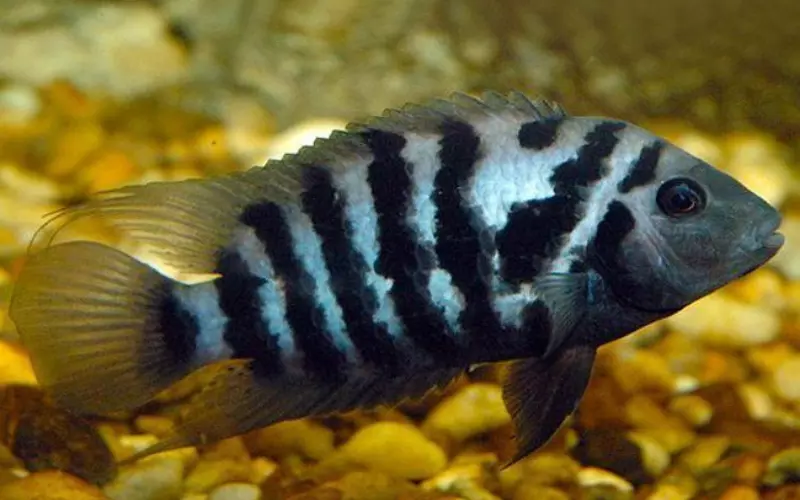
Cichlid fish have incredibly fascinating social and sexual behaviour. These colourful creatures, found in lakes and rivers around the world, exhibit complex interactions with other members of their species. They form social groups and establish territories, often fiercely defending them from intruders.
In the world of cichlid fish, each member has a designated role within their group. They have a strict hierarchy, with a dominant male in charge, several females for mating, and other males who are not allowed to breed. The dominant male maintains this status by displaying his vibrant colors and performing intricate courtship rituals to attract females. The females select males based on their displays of strength and vitality.
After courtship, the chosen female lays her eggs and carefully guards them until they hatch. Both parents take turns caring for the young, with the male often patrolling the territory to ensure their safety. If intruders approach, the parents fiercely defend their offspring, sometimes even attacking larger animals.
Cichlid fish demonstrate elaborate social and sexual behaviours. They form structured social groups, with a dominant male and several females. The males engage in courtship rituals to attract mates, and once a female is chosen, she lays eggs, which both parents protect until they hatch. These unique behaviours make cichlid fish a captivating species to observe in their natural habitats.
Reproduction and Lifecycle of Cichlid
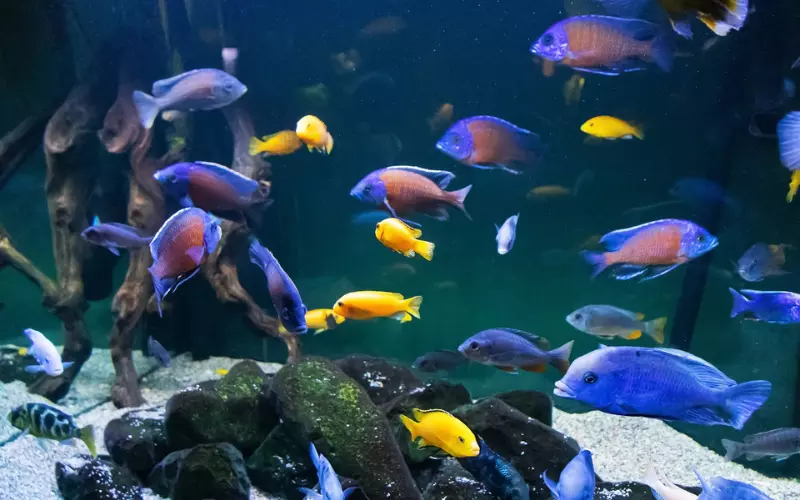
Cichlids are a type of fish found in various lakes and rivers worldwide. Their unique reproduction and life cycle help them survive and continue their species.
The reproduction of cichlids starts with courtship. Male cichlids demonstrate their attraction to the females by changing their appearance. They might develop brighter colours or grow bigger fins. Once the female is interested, the male leads her to a chosen spot where she lays her eggs. The male then fertilizes the eggs and guards them until they hatch. This helps protect the eggs from potential threats and ensures their survival.
Once the eggs hatch, the young cichlids are called fry. The fry stays close to their parents and is protected until they swim and find food. As they grow, they go through different stages. They start as tiny and defenceless creatures, but they become more robust and independent as they mature. As adults, cichlids continue the cycle by finding a mate and reproducing, ensuring the survival of their species.
The life cycle of cichlids revolves around reproduction and growth. Seeing how they go from tiny eggs to fully grown fish is fascinating. Their unique reproductive behaviours help them find a suitable partner and protect their offspring. This enables cichlids to adapt and thrive in their various aquatic environments.
Threats to Cichlid

Cichlid fish are amazing creatures that live in freshwater habitats such as lakes and rivers. Unfortunately, these beautiful fish face several threats that can harm their populations. One of the biggest threats to cichlids is habitat destruction. When humans alter or destroy their natural habitats by building dams or polluting the water with chemicals, it becomes difficult for cichlids to survive and reproduce.
Another threat to cichlids is the introduction of invasive species. Sometimes, people bring non-native fish into a new habitat, either intentionally or accidentally. These invasive species can outcompete the cichlids for food and space, causing their populations to decline. Additionally, some invasive fish may even eat the cichlid eggs or fry, making it even harder for them to reproduce and maintain their populations.
Pollution is also harmful to cichlids. When humans release harmful substances into the water, such as pesticides or industrial waste, it can damage the health of the fish. Polluted water can make cichlids sick or even lead to their death. This is especially problematic for cichlids because they rely on clean and clear water for survival.
Overall, cichlids face several threats that put their populations at risk. Habitat destruction, the introduction of invasive species, and pollution all negatively impact these fish. We must understand these threats and take action to protect cichlids and their habitats, ensuring their survival for future generations.
Population of Cichlid

The population of the Cichlid animal is currently estimated to be around 2,000 different species. These colourful fish are native to freshwater habitats, such as lakes and rivers, in Africa, Asia, and the Americas. Cichlids are known for their stunning colours and diverse body shapes, making them popular among aquarium enthusiasts worldwide.
However, it is essential to note that some species of Cichlid have become extinct over time due to various factors. Pollution, habitat destruction, and overfishing are the main reasons for their decline. The extinction of these fish is a significant loss to our planet’s biodiversity, as each species has a unique role in their ecosystem.
The population of Cichlid animals is estimated to be around 2,000 species. While some species have sadly become extinct, efforts should be made to protect and conserve the remaining populations. We need to understand the impact of our actions on these beautiful creatures and their habitats to ensure their survival for future generations to appreciate and enjoy.
Conclusion
To sum it up, Cichlid fishes have a rich and fascinating history. These colourful animals originate from Africa, South America, and Central America and have been around for millions of years. They have adapted to various habitats, from lakes and rivers to swamps and caves. With around 3,000 known species, Cichlids come in different shapes, sizes, and colours, making them some of Earth’s most diverse fish species.
Cichlids have interesting behaviours as well. Some species are known to be caring parents, constantly watching over their eggs and juveniles. They also have unique feeding habits, some being omnivores, eating plants and small animals, while others specialise in consuming algae or insects. Cichlids are well-known for their ability to change colour, which they use to communicate and attract mates.
Understanding the classification of Cichlids helps us appreciate their diversity. They belong to the family Cichlidae, which is further divided into several subfamilies and genera. Each species falls into a specific category based on its physical features, behaviour, and genetic makeup. This classification system helps scientists study and categorize the different types of these fascinating animals.
Cichlids are a varied and vibrant fish found in diverse habitats worldwide. Their long history, intriguing behaviours, and extensive classification make them a captivating subject of study for animal enthusiasts. By learning more about these remarkable creatures, we can better appreciate the wonders of our natural world and the incredible diversity of life within it.
Frequently Asked Questions about Cichlid (FAQ’s)
What is a cichlid animal?
A cichlid animal is a freshwater fish from the family Cichlidae.
Where are cichlids found?
Cichlids are found in various freshwater habitats worldwide, primarily in Africa and Central and South America.
What is the average size of a cichlid?
The average size of a cichlid can vary greatly depending on the species, but most range from a few inches to a foot in length.
How long do cichlids live?
The lifespan of cichlids varies depending on the species, but most can live anywhere from 5 to 15 years in captivity.
What do cichlids eat?
Cichlids are omnivorous, meaning they eat a combination of plants and small animals. Their diet can include algae, insects, crustaceans, and even smaller fish.
Can cichlids be kept with other fish?
While some cichlids can be kept with other fish, many are territorial and aggressive, making it challenging to keep them with other species.
How often should cichlids be fed?
Cichlids should be fed once or twice a day, with a diet consisting of dry and frozen foods to ensure proper nutrition.
Do cichlids require a specific water temperature?
Cichlids generally require a water temperature between 72 and 82 degrees Fahrenheit to thrive.
Can I keep cichlids in a small tank?
Keeping cichlids in a small tank is not recommended, as they require ample space to swim and establish territories.
How often do cichlids reproduce?
Cichlids are known for their prolific breeding habits; many species can reproduce multiple times a year.
Do cichlids exhibit parental care?
Many cichlid species exhibit parental care, with both parents taking turns guarding and caring for the eggs and fry.
Are cichlids suitable for beginners?
Some cichlid species can be suitable for beginners, while others require more experienced fishkeeping skills. Researching and understanding the specific species beforehand is crucial.
What are some common health issues in cichlids?
Common health issues in cichlids include swim bladder disorders, parasites, and bacterial infections. Regular water maintenance and monitoring can help prevent such issues.
Can cichlids change colour?
Yes, cichlids are known to exhibit colour changes, particularly during breeding or when stressed or threatened.
Are there endangered species of cichlids?
Yes, due to habitat destruction and overfishing, some species of cichlids are considered endangered, such as the Lake Victoria cichlids in Africa.

Hi there, I’m Emily Buono, and I’m thrilled to introduce myself! Currently, I’m part of two fantastic places: I work as a VisEx at the New England Aquarium and as an RAS at MGH CCM.
I completed my education at the Mass General Research Institute and Stonehill College, which is located in Valatie Colony, New York, in the United States.
Now, here’s the exciting part: I absolutely adore animals! They captivate me, and I’m always eager to learn more about them. In fact, I write articles all about these incredible creatures.
In the past, I’ve worn many hats, such as being a biologist at the Maria Mitchell Association, a cashier, a floor organizer, and a visitor experience and research animal specialist.
My passion lies in exploring the world of animals and helping others understand them better. So, if you ever have questions about animals, feel free to reach out. I’m here to make animal info easy and fun to grasp!

